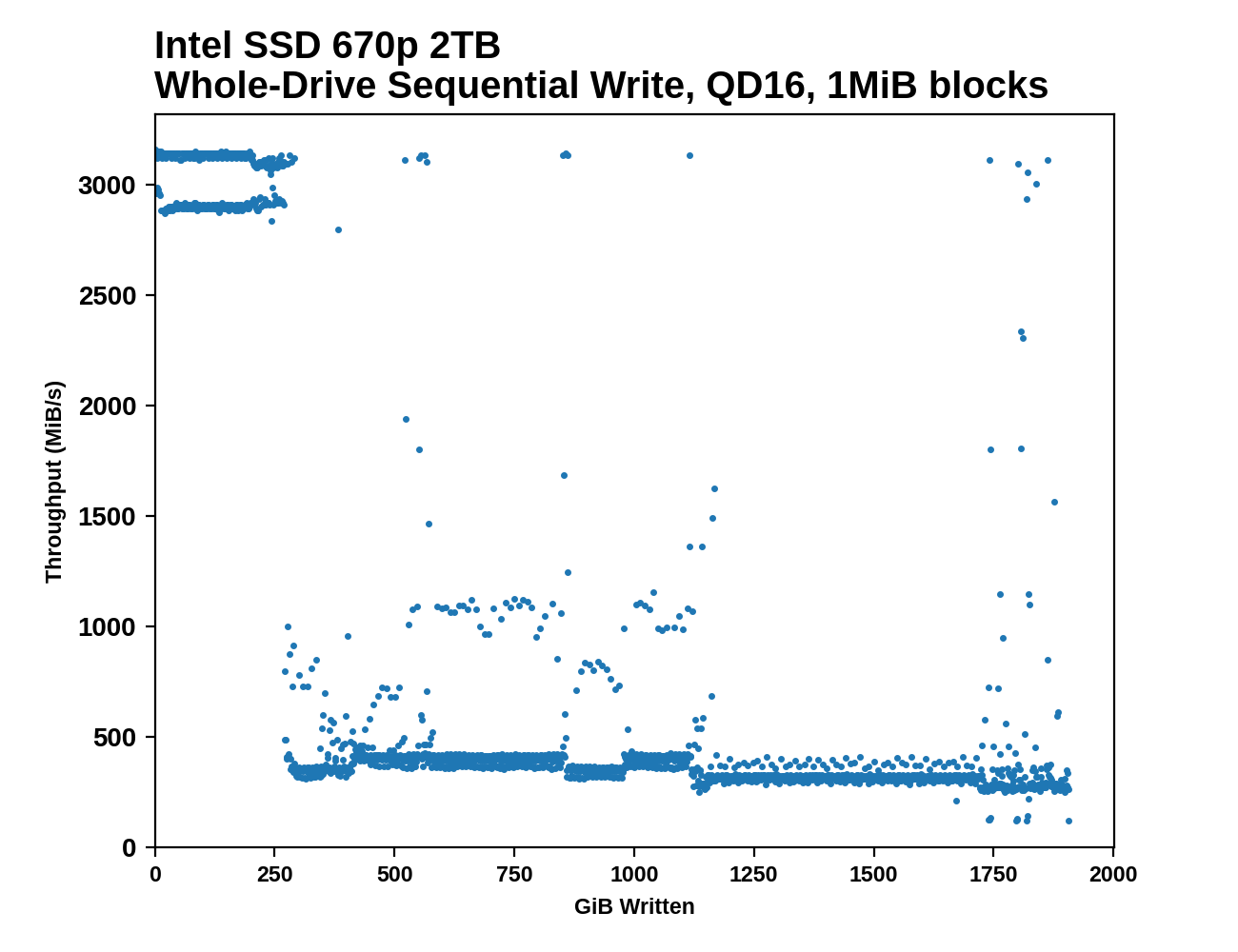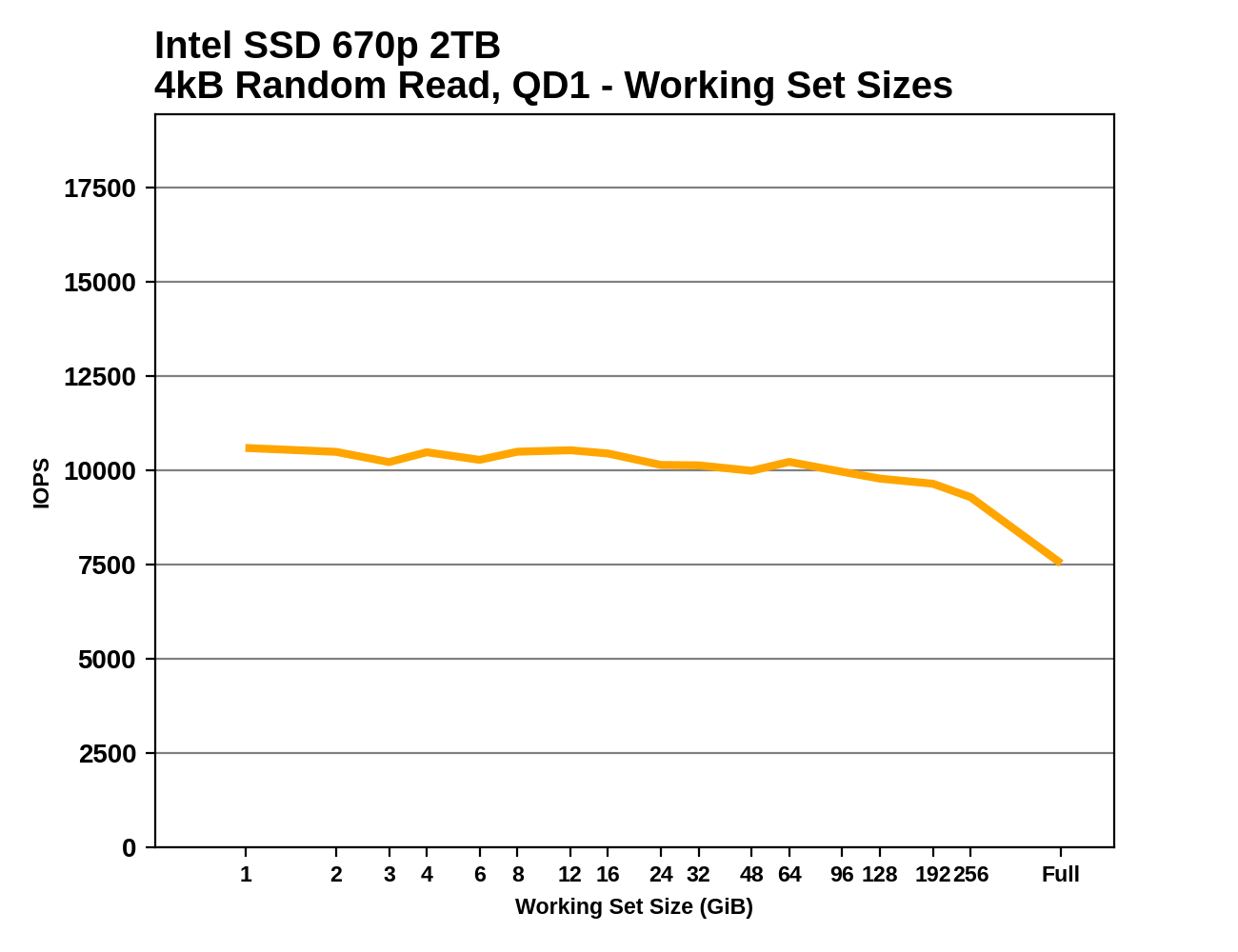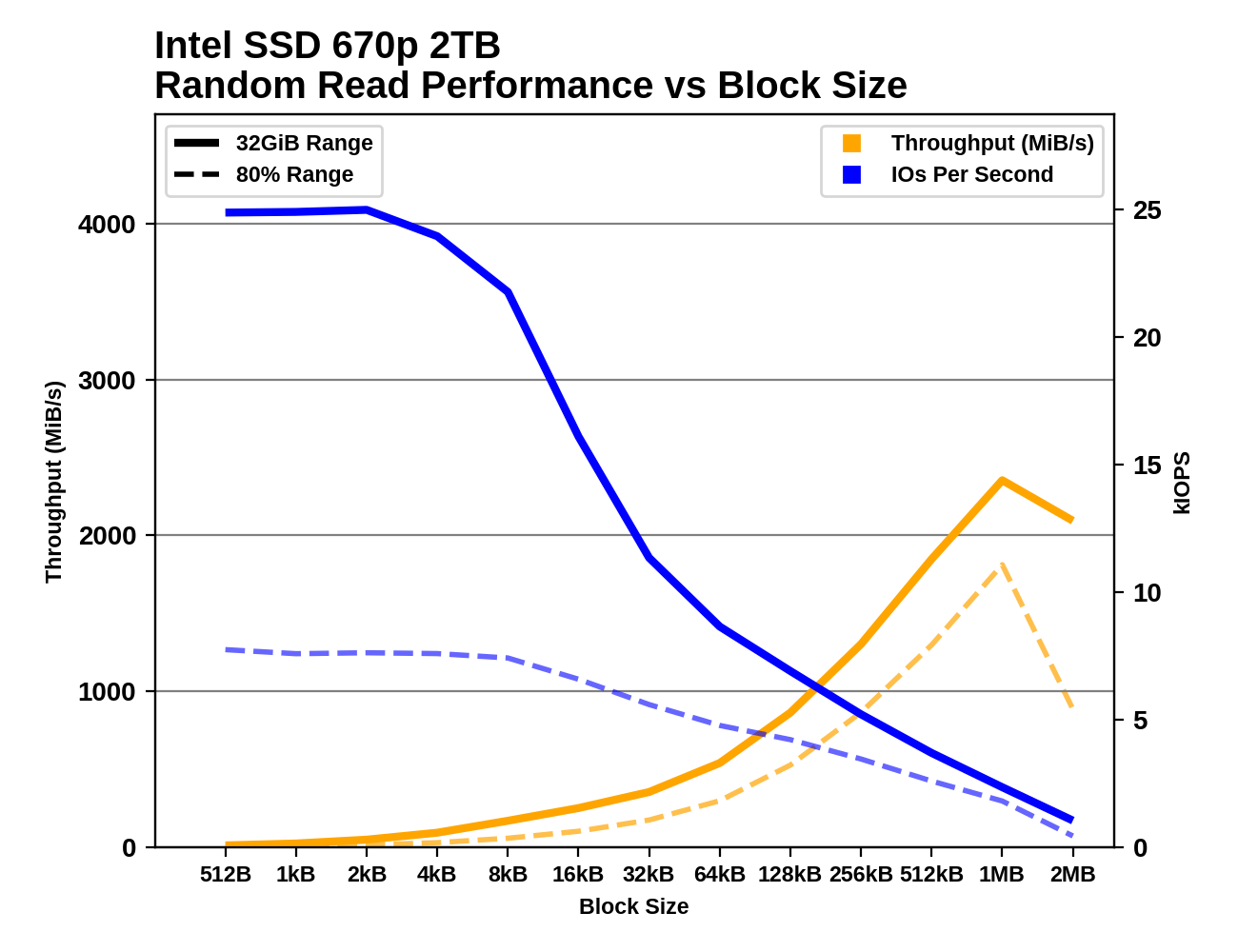The Intel SSD 670p (2TB) Review: Improving QLC, But Crazy Pricing?!?
by Billy Tallis on March 1, 2021 12:00 PM ESTAdvanced Synthetic Tests
Our benchmark suite includes a variety of tests that are less about replicating any real-world IO patterns, and more about exposing the inner workings of a drive with narrowly-focused tests. Many of these tests will show exaggerated differences between drives, and for the most part that should not be taken as a sign that one drive will be drastically faster for real-world usage. These tests are about satisfying curiosity, and are not good measures of overall drive performance. For more details, please see the overview of our 2021 Consumer SSD Benchmark Suite.
Whole-Drive Fill
 |
|||||||||
| Pass 1 | |||||||||
| Pass 2 | |||||||||
The Intel SSD 670p shows less consistent performance than the 660p during the sequential drive write. Writing to the SLC cache bounces between two performance levels, just above and just below 3 GB/s. The cache runs out more or less on schedule and performance drops down into SATA territory with sporadic outliers that are faster than normal. There's a bit of a stepped downward trend in performance as the drive approaches full. On the second pass that overwrites data on a full drive, the 670p is even more inconsistent with short bursts up to SLC write speed throughout the process.
 |
|||||||||
| Average Throughput for last 16 GB | Overall Average Throughput | ||||||||
The overall average write speed of the 670p is now almost enough to saturate a SATA interface. At the tail end of the filling process it does dip down to hard drive speeds, but any large sequential transfer of data onto the 670p will definitely complete more quickly than any one hard drive can handle. The controller upgrade helps some here (primarily with the SLC cache write speed), but for the most part the NAND itself is still the bottleneck, which means the smaller capacities of the 670p will not perform as well.
Working Set Size
 |
|||||||||
Intel is still clearly using a reduced DRAM design with the 670p rather than the full 1GB per 1TB ratio that mainstream SSDs use. The drop in performance at large working set sizes closely mirrors what we saw with the 660p, albeit with higher performance across the board thanks to the lower latency of the 144L NAND.
Performance vs Block Size
 |
|||||||||
| Random Read | |||||||||
| Random Write | |||||||||
| Sequential Read | |||||||||
| Sequential Write | |||||||||
With the 670p, Intel has eliminated the IOPS penalty that random reads smaller than 4kB suffer on the 660p, but that effect is still present for random writes. The IOPS difference between the short-range tests that hit the SLC cache and the 80% full drive tests is bigger for the 670p than the 660p; the newer drive has generally improved performance, but is in some ways even more reliant on the SLC cache.
Sequential throughput on the 670p keeps increasing with larger block sizes, long past the point where the 660p saturated its controller's limits. The performance trends for both sequential reads and writes are well-behaved with little disparity between the short-range tests and the 80% full drive tests, and no indication of the SLC cache running out during the sequential write tests.










72 Comments
View All Comments
octacore - Friday, March 5, 2021 - link
"It’s very important, for instance, that the latest Nvidia card is selling out at $600 despite having a vastly lower MSRP"Huh? Isn't it exactly illustrate my point? Do not take MSRP seriously, it is retail price that's matter. Same as not focus what someone says, it is what he does (I am not here to defend Intel at all)
bananaforscale - Wednesday, March 3, 2021 - link
Overpriced and irrelevant.